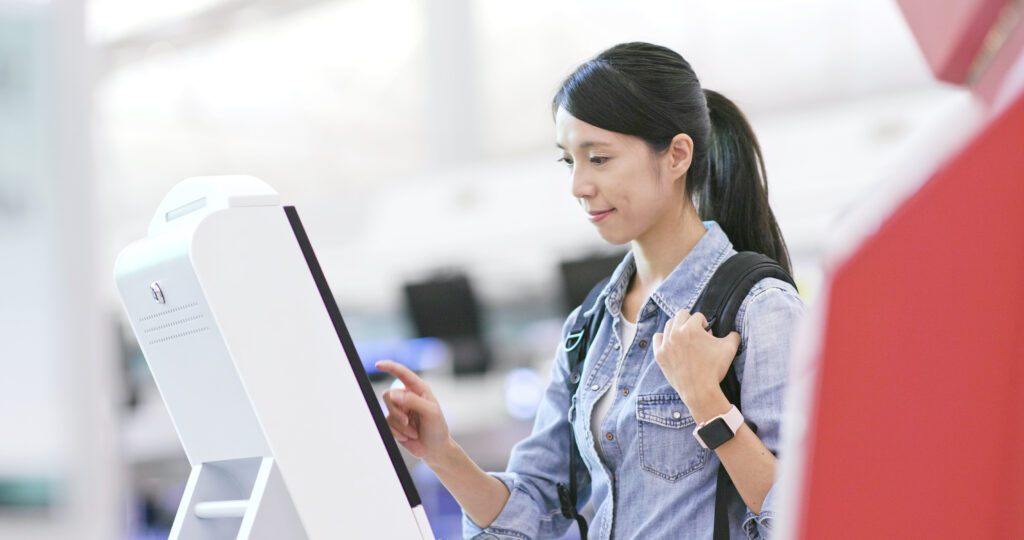Post-Covid-19 staff shortages at Australian airports are dampening the holiday spirit for many travelers who are taking to the sky for the first time in two years. Fears of cancellations, delays and lost luggage are compounded by frustration navigating around airports, figuring out where to check in, where to drop off baggage and which customs queue to join.
Airports and airlines are struggling to function in a Covid-19-affected world. A lack of investment in automation technology by Australian airports over the past 10 years has also put the industry on the back foot.
Technologies driven by artificial intelligence and automation are now proving vital to the industry’s ability to instill confidence in the flying public, in areas such as self-service check-in kiosks, baggage drops and passenger screening. Staff shortages are being felt the most in these areas as passengers navigate the process with squirming children, pushchairs and baggage.
Ground support staff are generally needed throughout each process, diminishing the independence of travelers while adding to the resources needed within the airport.
It needn’t be this way. Airports can run on time and make more efficient use of staff, space and other resources by giving passengers back their independence. We are lagging behind in Australia. Airports and airlines should be encouraging passengers to check in before they get to the airport. This is key.
Then, when passengers get to the airport, automated solutions can reduce passenger congestion in airports by 60%. This means higher capacity and efficiency potential for every airport – even regional and smaller airports – without any immediate need for capital works to expand terminals.
Barriers to efficiency
The biggest impediment to Australian airports and airlines improving passenger efficiency is their reliance on legacy technology. They need to look at more innovative companies using artificial intelligence and biometrics, and work with these types of organizations to implement futureproof technology.
Another issue is that airlines are wedded to the idea that their own infrastructure needs to be installed at airports. However, the trend is that airports are becoming common user environments; that is, it doesn’t matter what airline is there, they use the same technology. Airports need to provide the technology. The investment needs to come from the airports, and airlines need to realize they don’t have to own the infrastructure at every touchpoint.
While security is one of the biggest time thieves for passengers when they get to the airport, baggage is another one. In Australia, most airports operate with bag drop areas using old technology. This then leads to another pain point – the lack of baggage handlers. Getting off flights and getting your baggage is an issue at the moment. If the industry invested in innovative bag drop and security technology, airports could reallocate staff to those parts of the process that can’t be substituted with technology.
Steps to efficiency
Not including the time it takes to walk around the airport, it should not take more than two minutes for passengers to use a check-in kiosk and bag drop and get through security to the boarding gate. Adoption of biometric technology in domestic airports would also speed things up. That being said, biometrics needs to be optional.
There is no reason why a passenger cannot have an unencumbered experience through the airport. This is done overseas. For example, in Stockholm, passengers drop off their baggage and spend less than 15 seconds at the baggage injection point.
Airlines should be encouraging domestic passengers to check in before they get to the airport. With international travel, the government needs to step up and mandate that passengers upload all visa and passport information, and vaccine requirements, before the passenger goes to the airport. This information should be prevalidated before travel. The industry has tried to do this and so far it has not worked.
Short-term fixes
Unfortunately, implementing technology takes time. In the short term, technology is not the answer to the continuing chaos greeting travelers at airports. In the short term, passengers need to be as prepared as possible when they go through security and be as efficient as possible.
We need to understand that a lot of people left the industry and that the new people entering the sector have to be trained up, so there is a lag. Airports and passengers need to make a joint effort to make the experience better. Passengers need to have patience as airline staff are trying to do their best.
I believe with the technology options we have at our disposal today, the current chaos at airports around the globe could have been avoided. It is within our capability, as a sector, to provide total passenger independence while enhancing passenger satisfaction and airport productivity.

